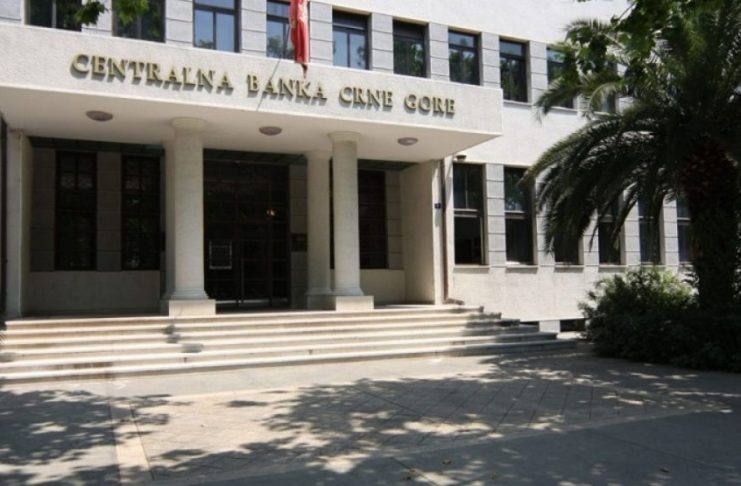Indebtedness per capita in Montenegro at the end of last year amounted to 2,241 euros, which is 2.7 percent more than at the end of 2019, according to data from the Central Bank (CBCG), writes Pobjeda.
On the last day of December 2020, the population owed 1.39 billion euros to banks for loans.
“The indebtedness of this sector on the basis of loans has increased by 36.4 million euros or 2.7 percent compared to the end of 2019. Loans in this sector grew at an average rate of 0.2 percent per month last year, while in 2019 they grew at a rate of 0.7 percent,” said the report on monetary developments last year, which was recently published by the CBCG.
The household sector mainly borrows from banks for more than a year, which is confirmed by the fact that long-term loans at the end of 2020 accounted for 98.4 percent of the total approved.
Reduced savings of citizens
When it comes to citizens’ savings, it fell by 62.5 million euros in the year of the pandemic and totaled 1.25 billion euros. Household deposits fell at a rate of 0.4 percent per month.
Demand deposits, ie saved money that can be withdrawn at any time, accounted for 62.8 percent of total household deposits, short-term deposits for 19.7 percent, while 17.5 percent referred to funds deposited for more than a year.
The biggest drop last year was recorded by long-term deposits in the amount of EUR 56.8 million, which citizens withdrew from banks. Demand deposits decreased by 16.5 million, while only short-term deposits grew, which increased by 10.9 million euros or 4.6 percent compared to the end of 2019.
“During 2020, loans granted to households were higher than the funds that this sector deposits in banks. At the end of 2020, the net debt of the population amounted to EUR 140.1 million and increased by EUR 98.9 million compared to the end of the previous year”, the CBCG report states.
Merchants took the most credit
Last year, the debt of legal entities and entrepreneurs increased, which at the end of 2020 owed 1.45 billion euros to banks for loans, which is an increase of 5.6 percent. The increase in debt is mostly the result of credit growth in three activities – accommodation and food services, public administration, defense and compulsory social security and information and communication.
In the structure of loans by activities, loans for wholesale and retail trade and repair of motor vehicles and motorcycles had a dominant share of 23.4 percent, followed by loans approved for state administration, defense and compulsory social insurance 20 percent, accommodation services and nutrition 16.5 percent and construction 11.1 percent.
Economists of the CBM estimate that the crisis has also affected the change in the structure according to the purposes for which the loans were taken. Thus, loans for refinancing liabilities to other banks recorded an increase of EUR 118.7 million or 65.8 percent in the comparable one-year period.
“Liquidity loans follow, which recorded an increase of 89.6 million euros or 16.5 percent. Loans for the preparation of the tourist season also increased by 28 million euros, or 313.8 percent. On the other hand, cash loans, as the largest percentage in the structure of loans by purpose, recorded a decline of 50.4 million euros or 6.5 percent,” the CBCG report added.
Decline in deposits offset by foreign loans
The CBCG states that in the year of great challenges, the banking sector in Montenegro remained stable, but also that the crisis affected the reduction of banks’ profits, growth of non-performing assets and non-performing loans.
“The problem of illiquidity of the real sector was reflected in the decline in bank deposits, with all sectors, except the financial and non-governmental and non-profit sectors, withdrawing funds. The banks compensated for the decline in deposits with increased foreign loans, mainly from parent banks and other members of the banking group,” the annual report of the supreme monetary institution states.
Bad loans were worth 172.9m euros
At the end of 2020, non-performing bank loans amounted to EUR 172.9 million, and compared to the end of 2019, they increased by EUR 28.3 million or 19.6 percent. They accounted for 5.5 percent of total loans.
“The growth of non-performing loans is expected, bearing in mind that certain activities have faced a liquidity and solvency crisis, starting with the first closure of the economy due to the pandemic, as well as the evidently rising unemployment rate. Nevertheless, the CBM has acted proactively in the direction of controlling the further growth of non-performing loans with measures related to deferred payment of obligations until the end of the tourist season, ie by the end of 2021, for the most affected in the real sector and households”, conclude the CBCG.
